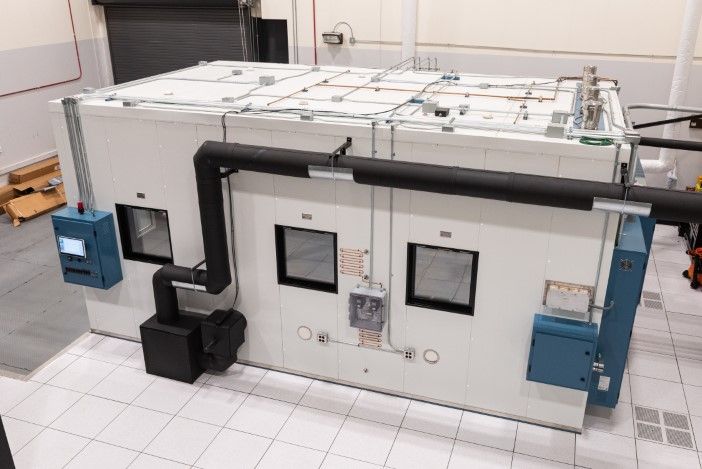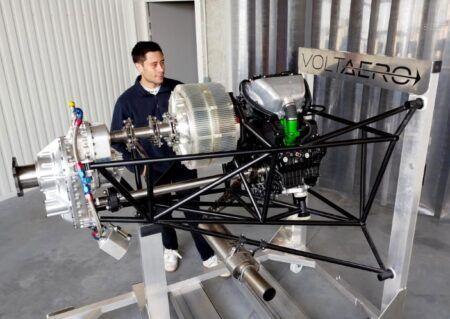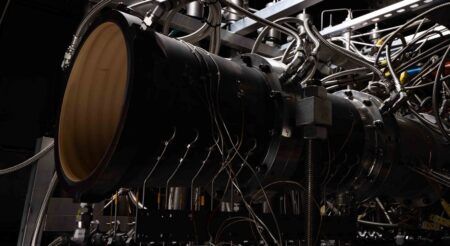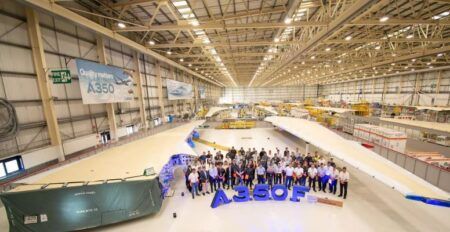The US Air Force Research Laboratory has opened its new Research Environmental Chamber, a facility designed to evaluate equipment and human performance under extreme environmental conditions. The chamber was unveiled during a ribbon-cutting ceremony at Wright-Patterson Air Force Base in Ohio at the end of last month.
The Research Environmental Chamber (REC) allows researchers to simulate a wide range of conditions, including temperatures from -60°F to 130°F (-51°C to 54°C) and humidity levels from 10% to 95%. The chamber accommodates up to four people and can simulate rain at a rate of 4 inches per hour.
“The REC is a critical addition to AFRL’s research capabilities and a key Department of Defense resource,” said Brig. Gen. Robert K. Bogart, 711th Human Performance Wing commander. “This chamber allows us to rigorously test both equipment and human performance, ensuring we’re prepared for the challenges of the future fight.”
The facility features a stainless steel interior with a removable chemical distribution chamber, access ports for wires, tubing, and cables, and grated floors. Heavy equipment can be tested with the floor and entry rated for 600 pounds per square foot. An antechamber prevents disruptions in the test environment by serving as a buffer between the entrance and main chamber.
“Understanding performance limitations of the warfighter and the equipment they use in extreme operational environments is necessary to develop mitigation strategies, ensuring mission success,” said Dr. Jennifer Schwanekamp-Kerr, REC primary investigator at AFRL’s Human Effectiveness Directorate.
Research conducted in the chamber will focus on evaluating the impact of extreme temperatures, humidity, rain and dust on both human and equipment performance. According to Schwanekamp-Kerr, a focus area will be testing chemical and environmental sensors to ensure equipment functions properly before deployment.
The chamber enables scientists to precisely control conditions and monitor subjects in real-time, leading to more accurate and reliable results. The facility also supports studies involving personal protective equipment and high-workload tasks in simulated extreme environments.
“The REC will allow researchers to simulate deployed conditions within a controlled laboratory setting, generating critical data to inform warfighter monitoring, operational guidance and the development of risk mitigation tools,” Schwanekamp-Kerr said.
The REC joins AFRL’s Research Altitude Chamber, centrifuge, Naval Medical Research Unit-Dayton’s Kraken and Darwin Chamber to expand Wright-Patterson Air Force Base’s physiology research capabilities.
“These facilities provide capabilities for evaluating human and equipment performance under a variety of stressors,” said Dr. Gaurav Sharma, chief scientist of the 711th Human Performance Wing. “Our scientists and engineers are conducting research in these controlled environments to optimize human performance and equipment effectiveness.”
The new research capability will benefit military, academic and industry customers. AFRL researchers and support staff will facilitate chamber operation and consult on study design.
Source: US Air Force, by Whitney Wetsig, 711th Human Performance Wing





